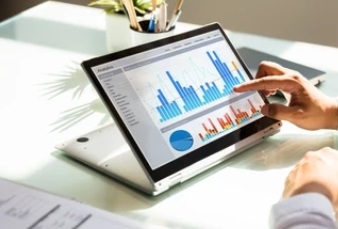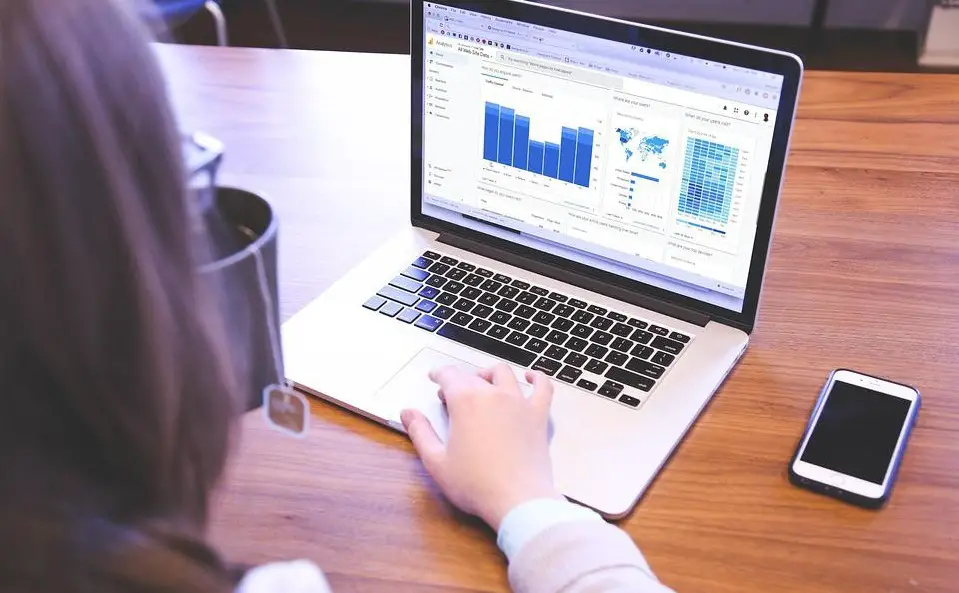
Today, data analytics is often used by businesses for various functions that are meant to improve their operations.
The ways one can use data analytics are many, but when you combine different branches of analytics, you actually get many valuable results.
One of the most popular branches of data analytics is predictive analytics. This type of analytics is a crucial tool for many companies, as it helps them organize their future business strategies, stay ahead of the competition, and anticipate future trends and changes in the market.
Table of Contents
- The Definition of Predictive Analytics
- The Process of Predictive Analytics Techniques
- Examples of Predictive Analytics
- Conclusion
The Definition of Predictive Analytics
Predictive analytics uses historical data and other techniques to predict a future outcome for an organization. This helps businesses improve their performance by foreseeing certain events that might happen in the future and strategizing appropriately to either avoid them or capitalize on opportunities.
Predictive analytics looks for patterns in the data that are later presented as predictions of a possible future outcome.
This branch of business analytics has been particularly of interest to companies due to its immense value. It essentially gives businesses more time to better plan their operations to make more profit.
Companies are always looking to stay current, so predictive analytics helps them see possible new trends before they fully emerge in the market so they can potentially take advantage of them to increase their profit. Another very important use of predictive analytics is risk mitigation.
If a business cannot increase its profit margin at a certain period, it would want to make sure that it can minimize or altogether avoid any losses. This can be achieved in multiple ways.
One way is forecasting sales to ensure that the company will at least be able to meet its standard conditions to keep a steady performance or assess risks for new initiatives.
Another is determining the likelihood of success or loss, which would dictate whether a new project should move forward or not.
Predictive modeling allows for all the above to occur by looking into big data analytics and employing various tools such as machine learning algorithms, statistical modeling, and various types of algorithms.
However, since this technique is only based on the finding of patterns in past data, it is understandable that the specificity and complete accuracy of the results is not guaranteed.
This is because predictive analytics mainly offer estimation, so companies cannot entirely rely on an expectation for specific outcomes.
The Process of Predictive Analytics Techniques
There are specific steps someone needs to follow to successfully perform predictive analytics techniques with a data set. Let’s take a look at the steps of predictive analytics.
Identify the Project’s Scope
Before using a predictive analytics tool, this first step requires you to determine what exactly you are trying to solve.
What are the questions you need to be answered?
If you are not sure how to formulate your questions, you should think about how do you plan to use the information provided by this process.
Understanding what you are looking for in the data set for predictive modeling will help you get more value out of this analysis. Moreover, it is a crucial first step to beginning your predictive analysis.
Collect the Data
In this step, you will need to determine what data you need to use in your analysis. This is an important step because your analysis will not give you accurate results if you do not collect the right data carefully.
Before picking your data, ask yourself if the data you have selected actually help you identify the problem you want to solve.
Are the data relevant to your problem? Are the sources reliable? How far in the past do you have to go to find data to identify accurate patterns?
This will determine if your data is of good quality and suitable for your analysis.
Create the Predictive Models
This is a crucial step as you will need to build a robust model that can successfully create the predictions you are aiming for. You will have to make sure that you set the proper controls that will be able to give you accurate results.
Set up your predictive model with functions that identify specific data and correlate it with other data, so you can enable it to find patterns.
It might be beneficial to experiment with different features and processes to see what works better for the type of results you are trying to get. Trying different approaches will also show you if your model works as it should.
Use the Predictive Model
Now that your predictive model works appropriately, you can finally deploy your advanced analytics. Integrate the predictive analysis results into your business processes to get accurate predictions.
Examples of Predictive Analytics
As mentioned earlier, predictive analytics is used by many businesses, but how exactly are they used and what for?

Predictive analytics is often used in marketing to determine the most appropriate communication techniques when targeting a specific audience. The results would predict what communication scenario would be more appealing to people.
It could find the type of communication (phone call, email, social media, mail), the messaging, the frequency of communication, etc. A lot of the current marketing campaigns are based on predictive analytics results.
Healthcare is also another field that uses this branch of data analytics, specifically for chronically ill patients.
Predictive analytics can be used to predict the progression of a medical condition based on data from past patients with the same condition. This helps medical professionals anticipate possible risks, making sure patients stay healthy and their condition is properly monitored and treated preemptively.
Another use for predictive analytics is in banking and insurance companies. Specifically, many organizations use predictive analytics for fraud detection. Analytics pinpoints fraudulent insurance claims based on past data and flags them for the company’s investigators.
Financial services often use it to detect credit risk for their clients, provide estimates for ongoing account payments, and help authenticate clients as they log in to their online banking.
Conclusion
Predictive analytics is a very useful branch of data analysis that helps businesses run smoothly and be prepared in advance for any fluctuations in their standard operations.
This important tool is highly popular and has already been integrated into many different industries that use it in various ways.



